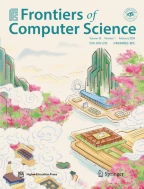Abstract
Plan recognition, the inverse problem of plan synthesis, is important wherever a system is expected to produce a kind of cooperative or competitive behavior. Most plan recognizers, however, suffer the problem of acquisition and hand-coding a larger plan library. This paper is aims to show that modern planning techniques can help build plan recognition systems without suffering such problems. Specifically, we show that the planning graph, which is an important component of the classical planning system Graph-plan, can be used as an implicit, dynamic planning library to represent actions, plans and goals. We also show that modern plan generating technology can be used to find valid plans in this framework. In this sense, this method can be regarded as a bridge that connects these two research fields. Empirical and theoretical results also show that the method is efficient and scalable.
Similar content being viewed by others
References
Ghallab M, Nau D, Traverso P. Automated Planning: Theory and Practice. Morgan Kaufmann Publishers, 2004
Bauer M. Integrating Probabilistic Reasoning into Plan Recognition. In: Proceedings of the 11th European Conference on Artificial Intelligence. Chichester/London/New York: Wiley, 1994, 620–624.
Hong J. Goal Recognition through Goal Graph Analysis. Journal of Artificial Intelligence Research, 2001, 15(1): 1–30
Kautz H. A formal theory of plan recognition. Dissertation for the Doctoral Degree. Rochester: University of Rochester, 1987
Kautz H, Allen J. Generalized plan recognition In: Proceedings of National Conference on Artificial Intelligence. AAAI Press, 1986, 32–37
Jiang Y H, Ma N. A plan recognition algorithm based on plan knowledge graph. Journal of Software, 2001, 13(1): 686–692
Lesh N. Scalable and adaptive goal recognition. Dissertation for the Doctoral Degree. University of Washington, 1998
Lesh N, et al. Scaling up goal recognition. In: Proceedings of the 5th Int. Conf. on Principles of Knowledge Representation and Reasoning. San Francisco: Morgan Kaufmann, 1996, 178–189
Bauer M. Acquisition of abstract plan descriptions for plan recognition. In: Proceedings of National Conference on Artificial Intelligence. AAAI Press, 1998, 936–941
Albrecht D W, et al. Bayesian model for keyhole plan recognition in an adventure game. User Modeling and User-Adapted Interaction. 1998, 8(1–2): 5–47
Blum A L, Furst M L. Fast planning though planning graph analysis. Artificial Intelligence, 1997, 90(1–2): 281–300
Hoffmann, J, Nebel B. The FF planning system: Fast plan generation through heuristic search. Journal of Artificial Intelligent Research, 2001, 14(1): 253–302
Hoffmann J. Where Ignoring Delete Lists Works: Local Search Topology in Planning Benchmarks Journal of Artificial Intelligence Research, 2005, 24(1): 685–758
Helmert M. The Fast Downward Planning System. Journal of Artificial Intelligence Research, 2006, 26(1): 191–246
Kautz H, Selman B. Unifying SAT-based and Graph-based Planning. In: Proceedings of International joint conference of Artificial Intelligence (IJCAI-99). San Francisco: Morgan Kaufmann, 1999, 318–325
Kautz H. Deconstructing Planning as Satisfiability. In: Proceedings of the Twenty-first National Conference on Artificial Intelligence (AAAI-06). AAAI Press, 2006, 320–323
Gerevini A, Saetti A, Serina I. Planning through Stochastic Local Search and Temporal Action Graphs. Journal of Artificial Intelligence Research, 2003, 20(1): 239–290
Gerevini A, Saetti A, Serina I. An Approach to Temporal Planning and Scheduling in Domains with Predicatable Exogenous Events. Journal of Artificial Intelligence Research, 2006, 25(1): 187–231
Blaylock N, Allen J. Corpus-based, Statistical Goal Recognition. In: Proceedings of International joint conference of Artificial Intelligence (IJCAI-2003). San Francisco: Morgan Kaufmann, 2003, 1303–1308
Hong J. Graph construction and analysis as a paradigm for plan recognition In: Proceedings of National Conference on Artificial Intelligence. AAAI Press, 2000, 774–779
Daniel W. Recent Advances in AI Planning. AI Magazine, 1999, 20(2): 93–123
Author information
Authors and Affiliations
Corresponding author
Rights and permissions
About this article
Cite this article
Sun, J., Yin, M. Recognizing the agent’s goals incrementally: planning graph as a basis. Front. Comput. Sc. China 1, 26–36 (2007). https://doi.org/10.1007/s11704-007-0004-5
Received:
Accepted:
Issue Date:
DOI: https://doi.org/10.1007/s11704-007-0004-5
